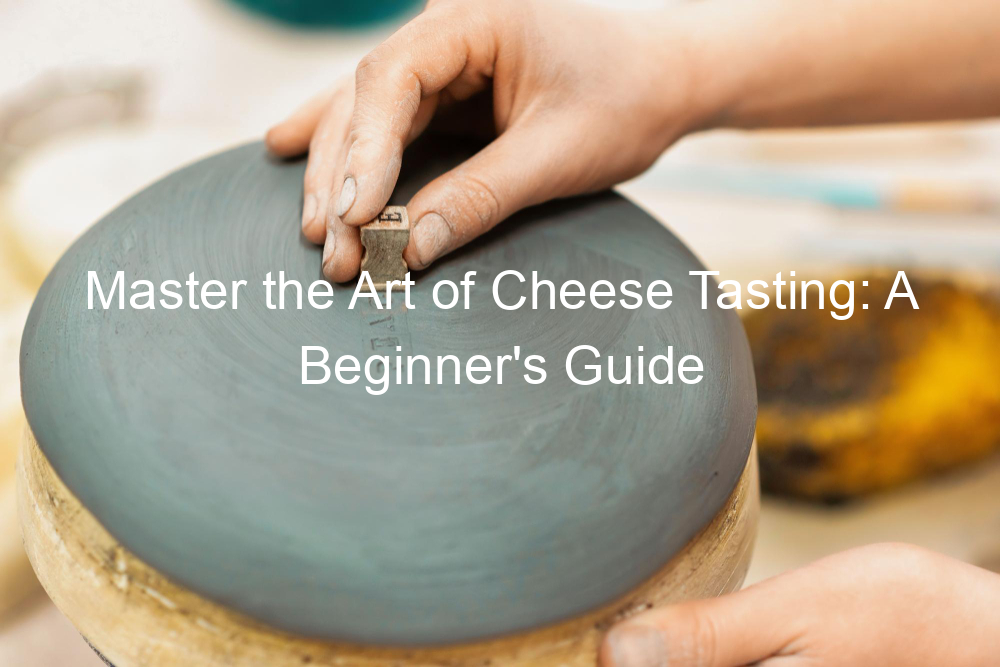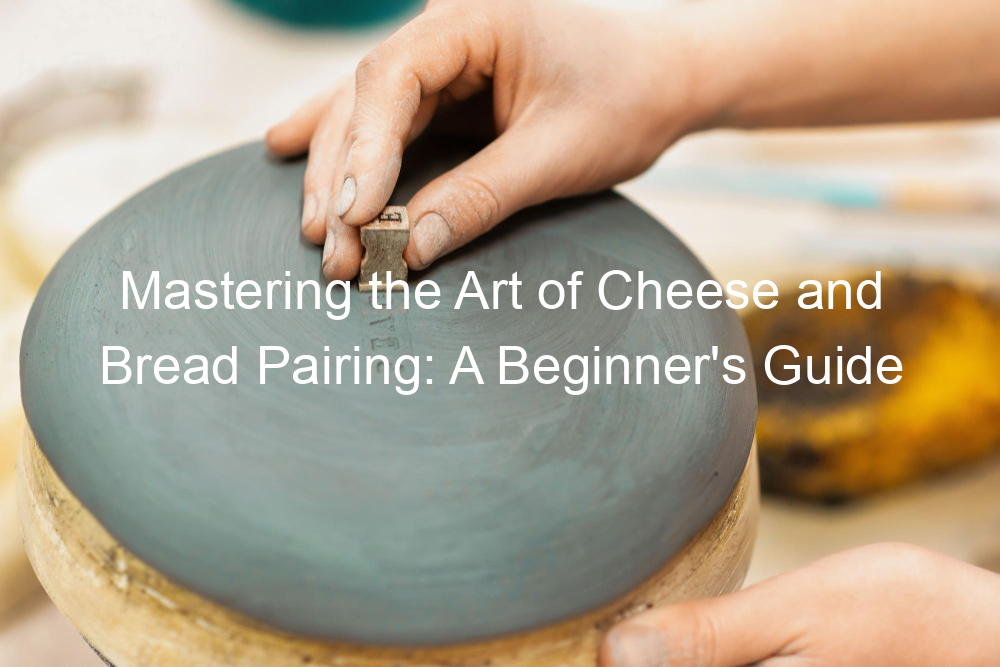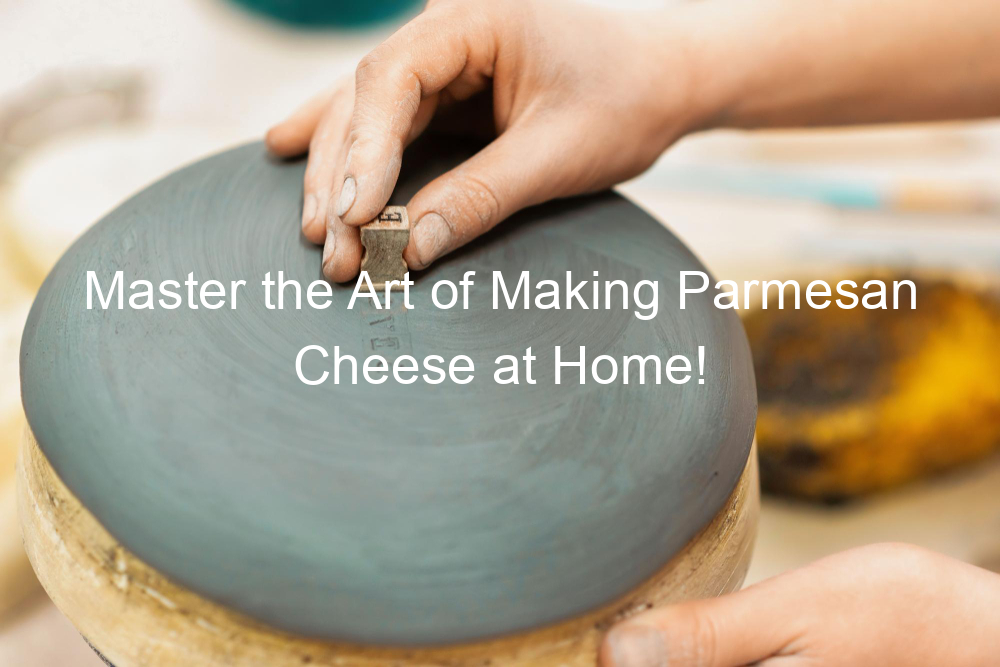
Introduction to Cheese Tasting
Welcome to the delightful world of cheese tasting! If you’re a cheese lover, this is an experience you won’t want to miss. In this section, we’ll explore what cheese tasting is and why it’s so popular among food enthusiasts.
-
- What is cheese tasting?
Cheese tasting is the art of savoring and evaluating a variety of cheeses. Much like wine tasting, it involves using your senses to appreciate the different flavors, textures, and aromas of each cheese. It’s a fun and educational experience that helps you discover new cheeses and understand your personal preferences better.
-
- Why is cheese tasting popular among food enthusiasts?
Cheese tasting has gained popularity for several reasons. First, it’s a unique and enjoyable activity that allows you to explore the rich diversity of cheeses from around the world. Second, it’s a great way to learn about the art of cheese making and the cultural traditions behind each cheese. Lastly, it’s a social event that brings people together to share their love of cheese. According to a Wikipedia article, cheese tasting events have been growing in popularity across the globe.
Now that you have a basic understanding of cheese tasting, let’s delve deeper into the process and learn how to make the most of your cheese tasting experience.
Basics of Cheese Tasting
Embarking on a cheese tasting journey can be a delightful and enriching experience. It’s not just about savoring the flavors, but also about understanding the cheese’s history, texture, and production process. Let’s explore the basics of cheese tasting for beginners.
Beginners Cheese Tasting
For those who are new to the world of cheese tasting, here are a couple of fundamental steps to get you started:
-
- Understanding the different types of cheese
There are hundreds of cheese varieties worldwide, each with its unique flavor, texture, and aroma. They can be broadly classified into four main types: Hard, Semi-hard, Semi-soft, and Soft. Hard cheeses like Parmesan are aged longer and have a strong flavor. Semi-hard cheeses like Cheddar are less aged and slightly softer. Semi-soft cheeses like Brie have a creamy texture, while soft cheeses like Ricotta are fresh and spreadable. Understanding these types can help you appreciate the diversity of cheese flavors.
-
- How to start your cheese tasting journey
Starting your cheese tasting journey is as simple as buying a variety of cheeses from your local store. Begin with milder cheeses like Mozzarella or Monterey Jack before moving on to stronger ones like Blue Cheese or Gorgonzola. Pay attention to the cheese’s texture, aroma, and flavor. Is it creamy or crumbly? Does it smell nutty or fruity? Is the taste mild or sharp? Noting these details will enhance your cheese tasting experience. Remember, there is no right or wrong when it comes to personal taste. The goal is to enjoy and appreciate the world of cheese.
The cheese tasting is a journey, not a destination. So take your time, explore different varieties, and most importantly, enjoy the process. Happy cheese tasting!
Cheese Tasting Techniques
As a cheese lover, developing your cheese tasting skills is crucial. Here are three essential techniques to help you appreciate the art of cheese tasting.
-
- How to Observe the Cheese
Observing the cheese is the first step in cheese tasting. Look at the cheese’s color, shape, and texture. The color can give you a hint about the type of milk used. For instance, cheeses made from cow’s milk are usually pale yellow, while those made from goat’s milk are whiter. The texture can tell you about how the cheese was made and its age. A younger cheese will be softer and creamier, while an older cheese will be harder and crumblier. The shape can also give you clues about the cheese’s origin and type.
-
- How to Smell the Cheese
Smelling the cheese is the next step. The aroma of the cheese can tell you a lot about its flavor. Some cheeses have a strong, pungent smell, while others have a mild, sweet aroma. Don’t be afraid to take a big whiff. You might pick up notes of grass, nuts, fruit, or even barnyard. These aromas come from the milk, the bacteria used in the cheese making process, and the aging process.
-
- How to Taste the Cheese
Finally, it’s time to taste the cheese. Take a small bite and let it sit on your tongue. Try to identify the different flavors. Is it sweet, salty, tangy, or bitter? Does it have a creamy, crumbly, or grainy texture? How does the flavor change as it melts in your mouth? Try to savor every bite and take your time. Cheese tasting is not a race, but a journey of discovery.
The cheese tasting is a personal experience. Everyone’s palate is different, so what tastes delicious to one person might not appeal to another. The most important thing is to enjoy the process and have fun exploring the world of cheese.
Best Cheese for Tasting
As a cheese lover, you might be wondering what the best cheeses for tasting are. There’s a whole world of cheese out there, waiting to be discovered. Let’s explore some of the finest cheeses that you should start with and some unique and exotic varieties that will take your cheese tasting experience to the next level.
Top 5 Cheeses to Start With
- Cheddar: This is a classic cheese that’s loved by many. Originating from the English village of Cheddar, this cheese is known for its rich and creamy flavor.
- Gouda: This Dutch cheese is sweet and fruity. It’s a great cheese to start with because of its mild flavor.
- Camembert: This French cheese is soft and creamy. It has a strong aroma and a flavor that’s not too overpowering.
- Manchego: This Spanish cheese is made from sheep’s milk and has a distinctive flavor that’s slightly salty.
- Mozzarella: This Italian cheese is known for its soft texture and mild flavor. It’s a great cheese to start with if you’re new to cheese tasting.
Exploring Unique and Exotic Cheese Varieties
Once you’ve tried the classics, it’s time to explore some unique and exotic cheese varieties. These cheeses might not be as well-known, but they offer a unique flavor profile that’s sure to delight your taste buds.
- Halloumi: This Cypriot cheese is known for its high melting point, making it perfect for grilling or frying. It has a salty flavor and a unique squeaky texture.
- Roquefort: This French cheese is one of the world’s best-known blue cheeses. It has a strong, tangy flavor and a crumbly texture.
- Stilton: This English cheese is another famous blue cheese. It has a rich and creamy texture and a complex flavor that’s both sweet and tangy.
- Limburger: This Belgian cheese is known for its strong smell. But don’t let that put you off – its flavor is surprisingly mild and creamy.
- Washed-rind cheeses: These cheeses are known for their strong aroma and flavor. They’re not for the faint-hearted, but they’re definitely worth trying if you’re looking to expand your cheese tasting horizons.
Cheese Tasting Tips
When it comes to cheese tasting, there are a few key tips that can enhance your experience. By preparing your palate, understanding cheese textures and flavors, and learning how to pair cheese with wine and other foods, you can truly savor each bite.
How to Taste Cheese
-
Preparing your palate
Before you start tasting cheese, it’s important to prepare your palate. This means cleansing it from other flavors that might interfere with your ability to taste the cheese. Drinking water or eating a small piece of bread can help to neutralize your palate. Avoid strong flavors like coffee, spicy foods, or mint before cheese tasting.
-
Understanding cheese textures and flavors
Cheese comes in a variety of textures and flavors. Some cheeses are soft and creamy, while others are hard and crumbly. The flavor of cheese can range from mild and milky to strong and pungent. Understanding these differences can enhance your cheese tasting experience. For example, a soft, creamy cheese like Brie has a mild, buttery flavor, while a hard cheese like Parmesan has a strong, nutty flavor.
-
Pairing cheese with wine and other foods
Pairing cheese with the right wine or food can enhance its flavor. As a general rule, light cheeses pair well with light wines, while strong cheeses pair well with full-bodied wines. Fruits, nuts, and honey can also complement the flavor of cheese. For example, a sharp cheddar cheese pairs well with a bold red wine and apple slices, while a creamy Brie pairs well with a light white wine and honey.
Cheese Tasting Guide
Welcome to our comprehensive cheese tasting guide. Whether you’re a beginner or an experienced cheese connoisseur, this guide will offer you valuable insights into the world of cheese tasting.
Cheese Tasting for Beginners
Starting your cheese tasting journey can be a thrilling experience. Here, we provide a step-by-step guide for your first cheese tasting and highlight common mistakes to avoid.
-
Step-by-step guide to your first cheese tasting
1. Choose your cheese: Start with a selection of 3-5 different types of cheese. Consider including a variety of textures and flavors, such as a soft Brie, a hard Cheddar, and a blue Stilton.
2. Prepare your palate: Cleanse your palate before tasting with plain water or unsalted crackers.
3. Observe the cheese: Take a moment to look at the cheese. Notice its color, texture, and shape.
4. Smell the cheese: Before you taste, take a good sniff of the cheese. A lot of the flavor is in the aroma.
5. Taste the cheese: Take a small bite and let it sit on your tongue. Try to identify the different flavors. Is it sweet, salty, bitter, or sour?
6. Take notes: Write down your impressions. This will help you remember your favorites and learn more about your personal taste preferences.
-
Common mistakes to avoid
Overloading your palate: Avoid tasting too many cheeses at once. Stick to 3-5 varieties in one session.
Rushing the experience: Take your time with each cheese. Observe, smell, and savor each bite.
Ignoring the order: Taste your cheeses in order from the mildest to the strongest. This way, the flavors of the stronger cheeses won’t overpower the milder ones.
Not cleansing your palate: Always cleanse your palate between different types of cheese to ensure you’re getting the true flavor of each one.
The cheese tasting is a personal experience. What matters most is finding and enjoying the cheeses that you love. Happy tasting!
Advanced Cheese Tasting
As you delve deeper into the world of cheese, you’ll find that there’s so much more to explore. Advanced cheese tasting is not just about identifying the type of cheese, but also understanding its texture, aroma, and the complex flavors that unfold in your mouth.
Cheese Tasting Tutorial
Let’s take a closer look at how you can enhance your cheese tasting skills and host a successful cheese tasting party.
-
- Exploring advanced cheese tasting techniques
Advanced cheese tasting involves a deeper understanding of the cheese’s characteristics. Here are some techniques to help you:
-
-
- Texture: Feel the cheese with your fingers. Is it hard, soft, or crumbly? This can give you a clue about its age and type.
- Aroma: Smell the cheese before you taste it. The aroma can tell you a lot about its flavor.
- Taste: Take a small bite and let it melt in your mouth. Try to identify the different flavors. Is it sweet, salty, bitter, or sour? Does it have a nutty or fruity flavor?
- How to host a cheese tasting party
-
Hosting a cheese tasting party can be a fun and educational experience. Here’s how you can do it:
-
- Selection of Cheeses: Choose a variety of cheeses, from different types and ages. Include both familiar and exotic options.
- Pairings: Pair the cheeses with suitable wines, fruits, nuts, and bread. This can enhance the overall tasting experience.
- Order: Start with the milder cheeses and gradually move to the stronger ones. This will prevent the strong flavors from overpowering the milder ones.
- Guidance: Provide some information about each cheese to your guests. This can make the tasting more interesting and informative.
The answer to advanced cheese tasting is practice. The more you taste, the better you’ll get at identifying the subtle flavors and nuances. So, go ahead and explore the wonderful world of cheese!
Conclusion
As we wrap up our comprehensive guide on cheese tasting, it’s important to revisit the key points we’ve discussed. This will help solidify your understanding and prepare you for your own cheese tasting journey.
- Recap of the cheese tasting guide: We started with an introduction to cheese tasting, explaining the basics and the importance of understanding the different types of cheese. We then moved on to discussing the best cheeses for tasting, providing you with a list of top picks to try. We also shared some essential cheese tasting tips to enhance your experience and a step-by-step guide to help you navigate the process. Finally, we delved into advanced cheese tasting techniques for those looking to take their cheese tasting skills to the next level.
- Encouraging the reader to start their cheese tasting journey: Now that you’re equipped with all this knowledge, it’s time to embark on your own cheese tasting journey. Remember, the world of cheese is vast and diverse, and the best way to learn is by tasting. Don’t be afraid to try new varieties and make note of your experiences. Cheese tasting is not just about discerning the different flavors and textures, but also about enjoying the process. So go ahead, start your cheese tasting journey today and discover the joy of cheese!
An every cheese has a story to tell, and every tasting is a new adventure. Happy cheese tasting!






